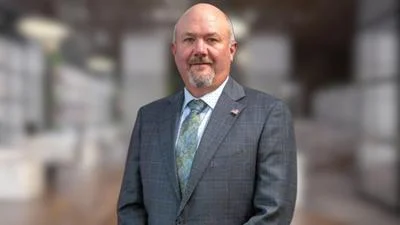The Congressional Record is a unique source of public documentation. It started in 1873, documenting nearly all the major and minor policies being discussed and debated.
“STATEMENTS ON INTRODUCED BILLS AND JOINT RESOLUTIONS” mentioning the U.S. Dept of State was published in the Senate section on pages S4237-S4239 on May 22, 2000.
The publication is reproduced in full below:
STATEMENTS ON INTRODUCED BILLS AND JOINT RESOLUTIONS
By Ms. SNOWE:
S. 2600. A bill to amend title XVIII of the Social Security Act to make enhancements to the critical access hospital program under the Medicare Program; to the Committee on Finance.
CRITICAL ACCESS HOSPITAL ENHANCEMENT ACT
Ms. SNOWE. Mr. President, I rise today to introduce the Critical Access Hospital Enhancement Act of 2000. This bill provides some much-needed program flexibility and refinements to the Medicare Critical Access Hospital Program.
Congress created the Critical Access Hospital Program three years ago when we passed the Balanced Budget Act of 1997 (P.L. 105-33). Under current law, a Critical Access Hospital must be located at a distance of over 35 miles from the nearest hospital; have emergency room and inpatient services provided by physicians, physician assistants and nurse practitioners; have fifteen or fewer inpatient beds; and inpatient stays must be limited to an average of 96 hours (four days).
The Critical Access Hospital program enables eligible rural hospitals to receive higher reimbursement rates for acute medical care. Through special allowances for staffing and reimbursements, designation as a Critical Access Hospital means that a community may be able to maintain local health care access which would otherwise be lost.
Many rural patients are Medicare and Medicaid participants and reduced reimbursements hit hospitals and medical centers hard: for example, two-thirds of the patients at Blue Hill Memorial Hospital in my home state of Maine are enrolled in Medicare or Medicaid. Designation as a Critical Access Hospital is especially important to these small, rural hospitals because it provides higher reimbursement rates
To date, there are 165 hospitals across the country that have been designated as Critical Access Hospitals, and three in Maine: Blue Hill Memorial in Blue Hill, St. Andrews Hospital in Boothbay Harbor, and C.A. Dean Memorial Hospital in Greenville. Without the Critical Access Hospital program many small, rural hospitals--many of which are often the only point of care for miles--will be lost. My bill seeks to strengthen this program; it is my hope that with passage of the legislation I introduce today, more of our nation's small, rural hospitals will be able to participate in this valuable program.
This bill will bring increased flexibility and programmatic refinements to the Critical Access Hospital Program through the restoration of bad debt payments, extending cost-based reimbursement to ambulance and home health services associated with Critical Access Hospitals, and modifying the provisions related to swing bed and laboratory services. In addition, I propose including a seasonality adjustment for hospitals that are based in communities that experience large seasonal population fluctuations.
Rural residents are often poorer and more likely to lack private health insurance when compared with their urban neighbors. As a result, rural hospitals disproportionately incur bad debt expenses. The BBA reduced bad debt payments for hospitals and the Health Care Financing Administration has interpreted this provision to apply to Critical Access Hospitals. My bill restores bad debt payments as a way to improve participation rates in the Critical Access Hospital program.
Emergency medical care is a crucial component in the Critical Access Hospital health care delivery system. Congress clearly stated that all outpatient departmental services furnished by Critical Access Hospitals should be reimbursed on the basis of reasonable costs, but HCFA has carved out ambulance services. My bill extends cost-based reimbursement to ambulance services associated with Critical Access Hospitals as it follows Congress's original legislative intent.
Critical Access Hospitals are often the sole sponsor of home health services in remote areas. If a Critical Access Hospital is the only home health provider in a rural community, then it would be useful to reimburse those services on the basis of reasonable costs. This bill will extend cost-based reimbursement to home health services associated with Critical Access Hospitals and will help maintain access to post-
acute medical care for Medicare beneficiaries.
Critical Access Hospitals are currently required to comply with extensive minimum data set standards under the skilled nursing facility
(SNF) prospective payment system (PPS). This bill will provide cost based reimbursement to swing bed services furnished by Critical Access Hospitals to help alleviate some of the administrative expenses associated with SNF PPS.
Laboratory services furnished by Critical Access Hospitals have historically been reimbursed on the basis of reasonable costs. In an attempt to clarify the statute and eliminate the collection of beneficiary coinsurance, the Balanced Budget Refinement Act (P.L. 106-
113) that we passed last November inadvertently referenced the fee schedule. Consequently, HCFA has interpreted the provision to mean laboratory services now will be reimbursed at the fee schedule rate. Correcting this provision is critical to ensuring that Medicare beneficiaries have access to important laboratory tests, and my bill does just that.
Seasonal fluctuations can occur in places likes coastal Maine where tourism swells the population in an area or in a small town near a ski resort. This seasonal population increase makes many otherwise tiny hospitals ineligible for the Critical Access Hospital Program. We must ensure that hospitals are available year round for a community's permanent population. It seems to me that if a hospital generally serves a community with a population of 2,000 but is seasonally faced with substantially much larger population, it should not de facto be made ineligible for the benefits of the Critical Access Hospital Program.
The final provision in The Critical Access Hospital Enhancement Act will allow a state flexibility in designating a hospital with more than 15 beds as a Critical Access Hospital if those additional beds are used only for seasonal fluctuations in admissions, and if the average annual occupancy is not more than 15.
Mr. President, small hospitals across the country are facing an increasingly uncertain future, and we must lend additional support to our rural health care providers. Refining the Critical Access Hospital program will ensure that the Critical Access Hospital designation is flexible enough for most rural areas. Expanding the Critical Access Hospital Program is critical to these small hospitals and the communities they serve.
______
By Mr. ASHCROFT:
S. 2601. A bill to amend the Internal Revenue Code of 1986 to exclude from the gross income of an employee any employer provided home computer and Internet access; to the Committee on Finance.
bridging the digital divide act of 2000
Mr. ASHCROFT. Mr. President, I rise today to introduce the Bridging the Digital Divide Act of 2000, a bill to make it easier for working Americans to obtain computers and computer equipment so that no one is left behind in the new Internet economy. This legislation makes it possible for employees to accept computers offered by their employers without having to pay the IRS taxes on the value of the computer.
Mr. President, the high-tech sector is an increasingly important part of our economy, creating new synergies and opportunities for Americans of all ages. The more we can do to encourage every American to participate in the Internet revolution, the more productive we as a nation will be.
But the benefits of the high-tech revolution, while lucrative, must not be limited to only some of our citizens. The great promise of the Internet revolution is that the benefits and rewards are accessed at the individual level; not just reserved for big businesses or multinational corporations. Our government should facilitate, not hinder, bringing that promise to each American.
In the long term, I believe that being hooked up to the Internet will be as universal as television. It is important to remember that the Internet is a new technology, one that few people had heard of ten years ago. We have gone from 5.8 million U.S. households online in 1994 to almost 40 million in 1999. By 2003, it is projected that 60 million households will be hooked up to the Internet.
In the short term, however, it is important to facilitate the availability of the Internet to all Americans. While many citizens have been taking advantage of the opportunities the Internet has to offer, too many Americans and Missourians have been left behind. Too many people are opting out or being left behind by the Internet economy.
According to Forrester Research, income is the main driver of Internet adoption. Americans who earn more, participate more, and thereby develop the ability to earn even more. According to a 1998 study by the Department of Commerce, households with income of $75,000 and more are over 20 times more likely to have Internet access than those at the lowest income levels.
This divide among income levels also indicates a divide along racial lines as well. According to the same Department of Commerce report, black and Hispanic households are roughly two-fifths as likely to have Internet access as white households. Overall, according to Forrester Research, only 33 percent of African American households are on-line, ten percent fewer than the national average.
In my home state of Missouri, great progress has been made toward the goal of bringing the state on-line. Since 1989, during my tenure as Governor, Missouri has managed a statewide network that connects state government departments and transmits voice, data, and video between them. The state Department of Administration runs the network, which connects government offices statewide over 14 nodes. In addition, according to the Department of Commerce, 42 percent of Missouri households have computers.
Despite this progress, there is still more to do. In terms of Internet usage, Missouri ranks 32nd out of the 50 states, with only 24.3 percent of households connected to the Internet in 1998. Clearly, it is in Missouri's interest to promote increased connectedness.
Across the nation, those who appreciate the power and opportunities inherent in the Internet continue to increase their involvement in the high-tech world. 60 percent of computer sales are being made to households that have already purchased a computer, demonstrating that these households recognize the importance of remaining current and up to date with their computer equipment. At the same time, only 40 percent of computer sales are being made to households purchasing a computer for the first time. If we want more Americans to experience the high-tech economy, we should encourage first time computer purchases and find ways to make computer ownership easier for families who are currently without.
According to Dr. Mark Dean, a specialist in advanced technology development for IBM, the solution to the digital divide is to put computers in as many homes as possible. Unfortunately, when employers have tried to help bridge this gap by providing their employees with computers and Internet access, the Internet Revenue Service has widened the digital divide by treating the new equipment as a ``taxable event,'' or in other words, requiring the employee to pay income tax on the value of the computer.
Recently, the Ford Motor Company began a laudale effort to increase involvement of its employees in the high-tech economy. In February, Ford announced that it would give all of its 350,000 employees free computers for their homes. Ford is doing this because they recognize the value of having a workforce that is computer literate and internet savvy. Ford understands that in the digital economy, on-line workers are more productive workers--whatever their responsibilities are with the company.
Unfortunately, the IRS does not see things the same way. The IRS approach is to tax everything it can get its hands on, including the computers Ford is providing to employees to help bridge the digital divide. According to the IRS, the employees who receive these computers from their employer are liable for tax on the value of the computers.
Mr. President, this is wrong. When companies make the move to bring all of their employees into the 21st century, the government should not make it harder on the workers to accept the technology by increasing their taxes. Ford's employees should not be penalized for having an employer that understands the importance of a computer-literate workforce. The fact is that computers are a vital business tool, for all employees, and Ford has demonstrated its understanding of this fact by providing these computers for every employee, from the newest worker to the CEO.
Ford's employees should not have to suffer as a result of the IRS's 19th century approach to tax policy. It is for this reason that my bill, the Bridging the Digital Divide Act of 2000, instructs the IRS not to treat computers provided to all employees by an employer as taxable income to the employee. This measure is in the interest of employees and employers alike. And because computers in the home will help increase our economic productivity and hence our output, we can expect that the long term impact of this provision will prove beneficial not just to workers and their families but to the nation's economy as well.
Mr. President, many politicians stand up and complain about the problem of the ``digital divide.'' The Ford Motor Company has actually found a solution--a private sector solution--for its employees. The response of the government should be to thank Ford and encourage other companies to do what Ford has done--to take action that is in the best interest of its workers, not just for today, but for the future as well. But instead, the government response is to tax the recipients. I hope that other companies will follow Ford's example. By enacting this legislation, we may be making it possible for the private sector to help solve the digital divide, and will at least be ensuring that the government will not put the taxman in the way of the bridge-
builders of the new economy.
____________________








